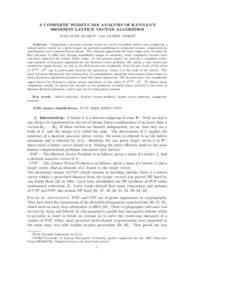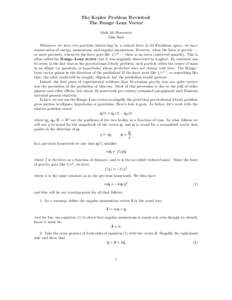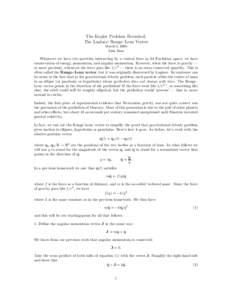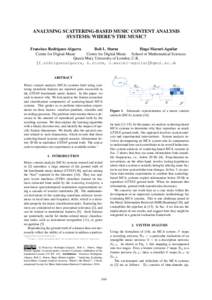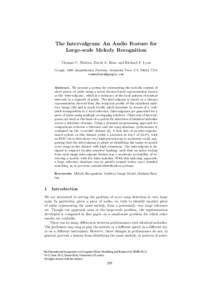<--- Back to Details
| First Page | Document Content | |
|---|---|---|
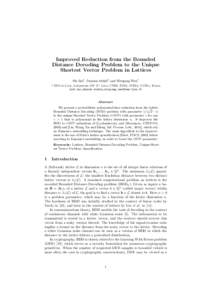 Date: 2016-08-31 11:57:10Algebra Mathematics Cryptography Linear algebra Lattice-based cryptography Post-quantum cryptography Lattice points Computational hardness assumptions Lattice Euclidean vector Basis Crystal structure |
Add to Reading List |
 Improved Reduction from the Bounded Distance Decoding Problem to the Unique Shortest Vector Problem in Lattices Shi Bai1 , Damien Stehl´e1 and Weiqiang Wen1 1
Improved Reduction from the Bounded Distance Decoding Problem to the Unique Shortest Vector Problem in Lattices Shi Bai1 , Damien Stehl´e1 and Weiqiang Wen1 1